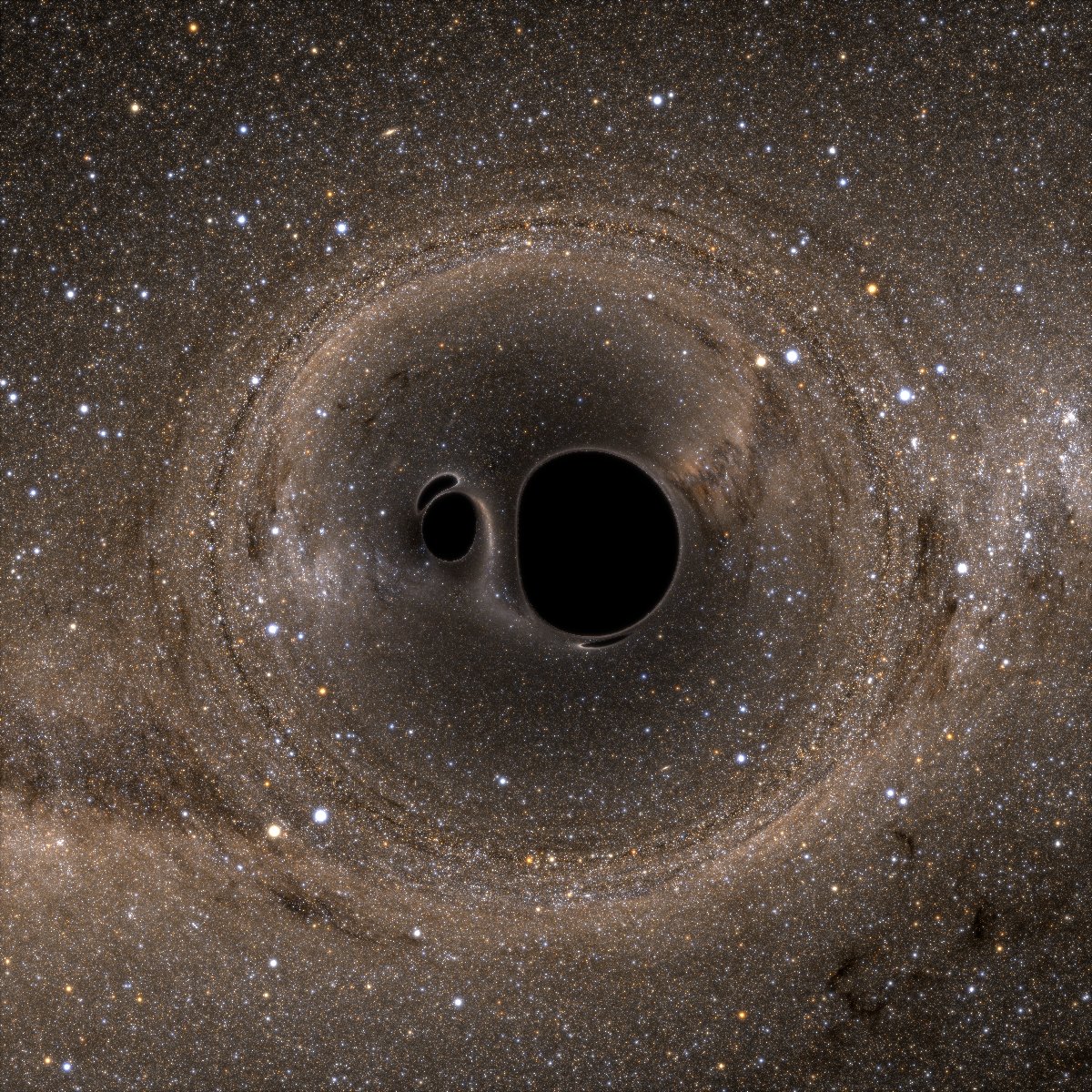

Black holes aren’t just ultra-massive collapsed stars that trap light with the sheer force of their gravitational waves. They’re also very difficult objects to model–especially when they interact with other black holes. This image from a recent study represents a good first impression of what two black holes might look like as they come close to slamming into one another. There are only two bodies pictured, but their mass bends the starlight around them in strange ways, creating the impression of several orbs.

In the world of asteroids, comets, and planets, collisions follow fairly classical physics models–the set of rules Isaac Newton pioneered for describing the way things speed up, slow down, tug on each other, and otherwise behave in this universe. This system remains pretty accurate for modeling, say, a lander approaching a comet, or an asteroid slamming into Earth. But Einstein showed that Newtownian physics is at best a rough approximation of the universe’s ultra large-scale mechanics.
Black holes bend spacetime, sending ripples through the universal fabric. When two get close, they lurch toward one another at substantial fractions of lightspeed, warping spacetime to tatters in the process. The effect looks a bit like what you’d see if you bounced a starscape off a wobbling fun house mirror. Whenever scientists tried to model it, physicist Matthew Duez tells Popular Science, “their equations blew up in their faces.”
Duez, a researcher with the Simulating Extreme Spacetimes (SXS) project, says that for decades, scientists’ best understandings of the universe just weren’t cutting it when it came to modelling black hole mergers. They needed to “evolve” Einstein’s field equations governing spacetime distortions.
The models gradually got better over time, until the SXS team was able to simulate what a double black hole impact might look like to the naked eye. They placed two imaginary black holes in front of the Milky Way in their simulation. Then they tracked each ray of light as it moved through the system to produce step-by-step images of the process. If you watch the animation below, you can see points of light appearing, disappearing, and seeming to shift around. In fact, the stars are staying still–but the light streaming from them twists, splits, and spins around the black hole. The resulting circular clusters are known as “Einstein Rings.”

